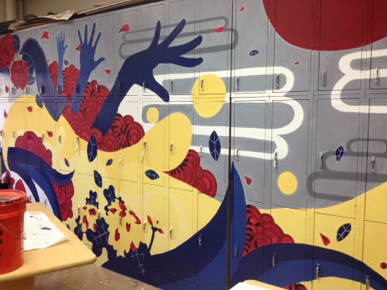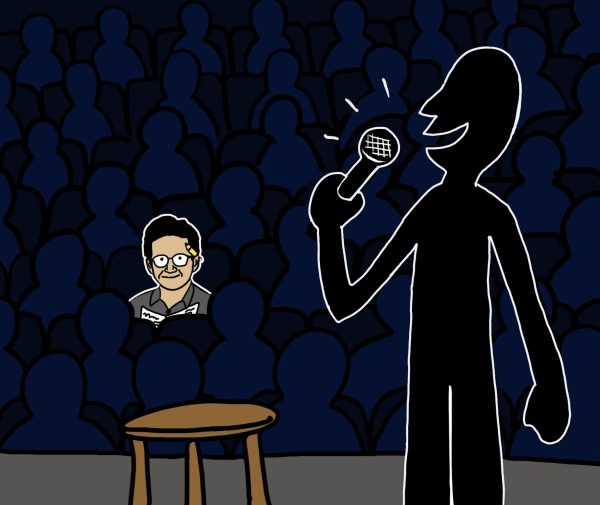Street artists use unconventional art to express themselves

October 28, 2016
Some may think artwork is just hanging up in a museum downtown, but street artists are expanding their canvases, spraying art onto walls and boarded-up windows across Evanston and Chicago.
“Street art is your artistic friend’s revolutionary-anti-consumerist night time spray painting on a local Walmart,” senior Nate Tracy-Amoroso says. “Graffiti is when some kid vandalizes the store you own and you have to pay $250 to get it removed.”
Street art is a newer art form, and is not just limited to spray paint on walls. Graffiti is older and done by untrained artists, mostly in order to vandalize.
“Bigger pieces of art hold a lot of power compared to a framed painting on the wall,” senior Jessica Cardenas says. “I love street art because no matter who you are or where you’re from you can enjoy it.”
According to the University of Notre Dame, certain types of street art are contributing to gentrification and to increases in the appeal of certain neighborhoods. It adds to the artistic appeal of a city and showcases the city’s culture.
“My work is the continuation of exploration of public space and getting people to look at it differently, while at the same time developing a visual language that is my own,” professional artist Ruben Aguirre says.
Street art is used as a form of protest art, allowing the artist to reveal the problems of the community on a larger scale that everyone could see.
“The only thing that would prompt me to take the risk of doing street art is if I felt very strongly about a local issue. Sweeping declarations about the evils of the prison system on the side of a library are unlikely to change anything,” Tracy-Amoroso says. “So, a pointed criticism of a local issue is the only kind that I would consider worth the risk.”
Street art benefits not only the culture and community surrounding it, but the artists themselves. Artwork enables artist to share their beliefs with the world. Drawing attention to issues they hold close to their heart. Furthermore, it gives them an outlet to express themselves.
“Finding a medium to channel your energy into, express yourself and build a creative identity for yourself can be rewarding in various ways,” Aguirre says. “It can build communities, allow for creative expression, help with skill building and potentially much more.”
Classes for street art are offered at Evanston Art Center. Two artists, Chris Thomas and Zebadiah Arrington, teach the classes during the school year and offer a workshop over the summer.




















